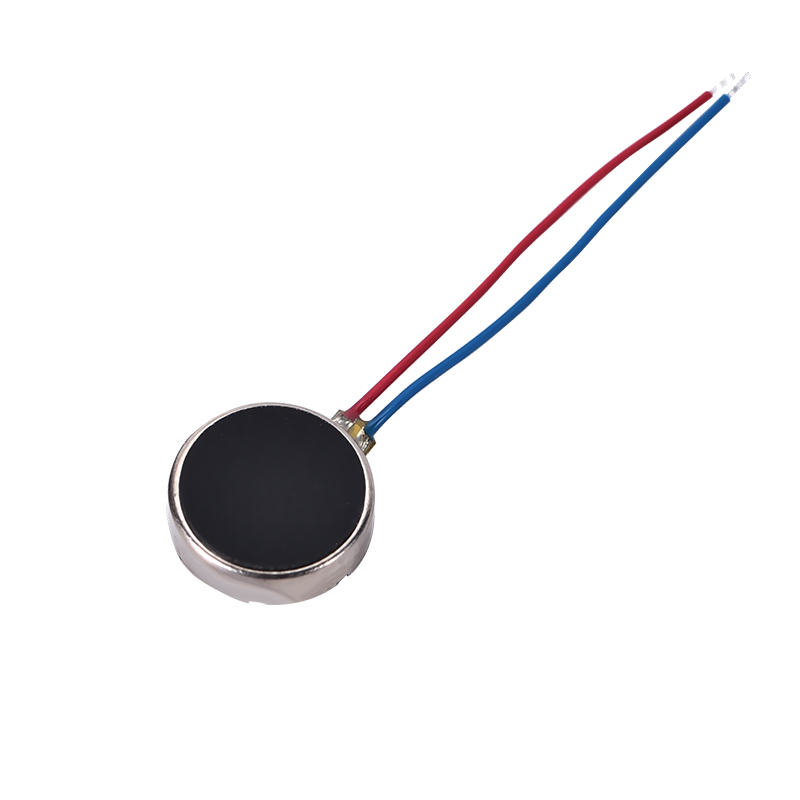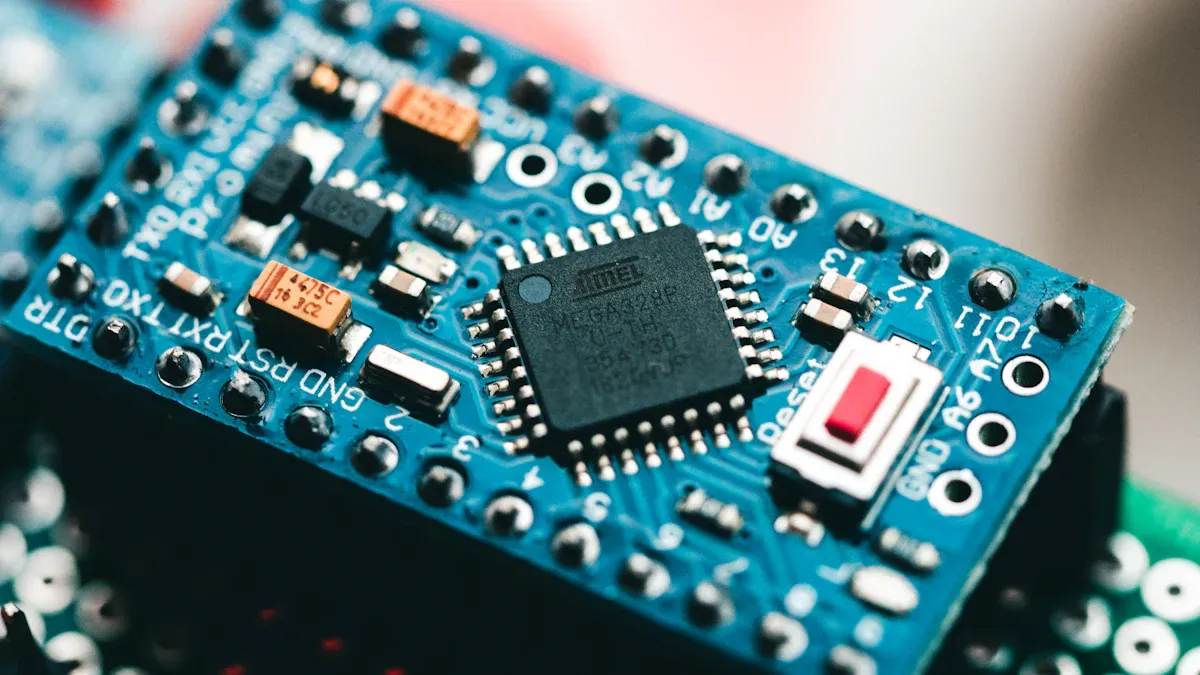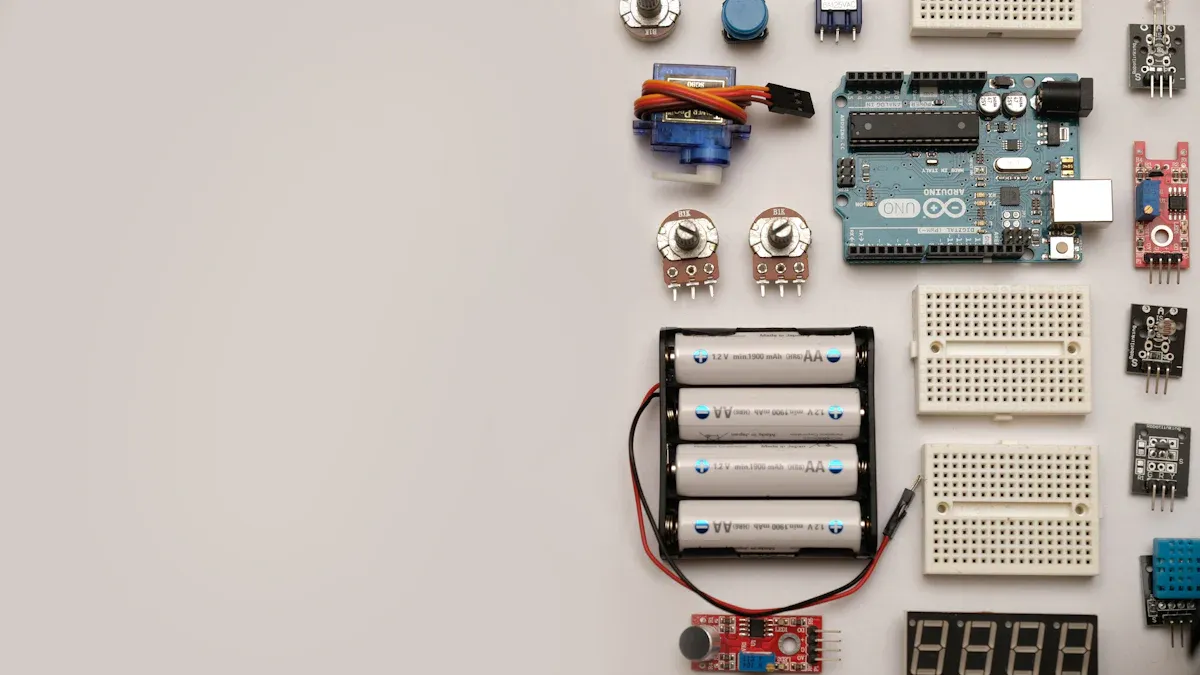The Evolution of the World's Smallest Electric Motors and Nanotechnology Breakthroughs

Scientists can now make electric motors that are very tiny. These motors are as small as 1-nanometer and have only 16 atoms. This is a big step in making things smaller. Electric Motors used to be big and easy to see. Now, some are smaller than a virus. Nanotechnology helped make this happen. These new ideas can help medicine, industry, and technology in new ways.
Even one motor this small can move molecules or bring medicine inside the body.
Key Takeaways
Scientists have made electric motors that are only one nanometer big. These motors are built from just a few atoms. This is a big step in making very tiny machines.
Special tools like scanning tunneling microscopes help scientists see these small motors. These tools also let them control the motors. This helps scientists learn how the motors work with atoms.
Nanomotors can be used in real life. They can help in medicine by sending drugs right to cancer cells. They are also used in technology, like making tiny sensors and electronics.
New materials like carbon nanotubes and graphene make nanomotors stronger. These materials also help the motors work better. Smart designs help turn small moves into useful actions.
Scientists keep working to make nanomotors safer and smarter. They want the motors to work better inside the body. But there are still problems, like controlling speed and stopping protein buildup.
Defining Smallest Motors
What Makes a Motor "Smallest"
Scientists use exact measurements to decide what is the smallest motor. They check the size, how many atoms it has, and if it can move in a controlled way. In electric motors, NEMA uses frame sizes to sort motors by how big they are. The 56 Frame is the starting point for the smallest standard motors in factories.
NEMA Frame Size | Typical Application | Significance for 'Smallest' Classification |
|---|---|---|
56 Frame | Small industrial and commercial applications | This is the basic size for the smallest motors |
143T/145T | Pumps, conveyors, fans | These are bigger than the smallest frame sizes |
182T/184T | Industrial applications needing more power | These are even larger frame sizes |
215T and above | Heavy-duty industrial applications | These are the biggest frame sizes |
Scientists have gone much smaller than these normal sizes. Now, the tiniest motor is only 1 nanometer wide. A human hair is about 80,000 to 100,000 nanometers wide. So, the smallest motors are over 80,000 times smaller than a hair. These motors can be single-molecule motors, 16-atom motors, or carbon nanotube motors. Each one is a big step in making machines smaller and smaller.
Note: The smallest machines, like molecular motors, are too tiny to see. Scientists need special tools, like scanning tunneling microscopes, to watch and control them.
Key Milestones
Making the smallest motor took many important steps. At first, scientists tried to see and measure how single molecules moved. In 1995, they saw single motor molecules for the first time. By 2001, they could measure how single kinesin motors turned based on what was around them. In 2003, new ways to track single motor proteins let scientists see them very clearly. In 2006, super-resolution methods like PALM and STORM helped them see things almost as small as 1 nanometer. That year, they also watched single molecular motors working inside living cells.
Year | Milestone Description | Key Contributors | Notes |
|---|---|---|---|
1995 | Saw single motor molecules for the first time | Yanagida, Kinosita, Vale | First time seeing single motor molecules |
2001 | Measured how single kinesin motors turned | Moerner, Goldstein | Measured turning at the single-molecule level |
2003 | Tracked single motor proteins with high detail | Selvin, Spudich | New tracking gave nanoscale detail |
2006 | Used super-resolution SMS methods (PALM, STORM, FPALM) | Betzig, Hess, Lippincott-Schwartz, Zhuang, Hess | Helped see almost down to 1 nanometer |
2006 | Watched single molecular motors in living cells | Meyhöfer, Dahan, Cappello, Spudich | Measured speed and distance in real cells |
These steps helped scientists learn how tiny machines work in real life. They found that even in busy cells, molecular motors can move fast and well. Making a 1-nanometer single-molecule motor and a 16-atom motor shows how much progress there is. Carbon nanotube motors are also important in this area. Each new step helps scientists get closer to building tiny machines that can work inside the body or in small electronics.
Evolution of Electric Motors
Early Miniaturization
Electric motors started out very big. Scientists wanted to make them much smaller. They began by testing ionic polymer metal composite actuators. These actuators could move when they got electric signals. They helped microrobots walk with legs just a few millimeters long. Next, scientists made magnetic microactuators. They put magnetic particles in soft materials or added thin magnetic layers. This let them control movement with magnetic fields.
Richard Feynman was a famous physicist. He inspired many people to work on tiny machines. In 1959, he asked scientists to build the smallest machines they could. His challenge led to smaller and smaller motors. Over time, scientists made devices that could move at the micro and nano levels.
Year | Authors (Selected) | Journal / Publication | Contribution / Evidence of Breakthroughs in Miniaturization Experiments |
|---|---|---|---|
1999 | Gogotsi, Miletich, Gardner, Rosenberg | Rev. Sci. Instrum. 70, 4612 | Early research on modular miniaturization nanoindentation devices |
2004 | Rabe, Breguet, Schwaller, Stauss, Michler | Thin Solid Films 469/470, 206 | Advances in thin film technologies for miniaturization |
2006 | Motoki, Gao, Kiyono, Ono | Meas. Sci. Technol. 17, 495 | Testing of miniaturized measurement technologies |
2007 | Park, Kwon, Bang, Cho, Han, Choi | Rev. Sci. Instrum. 78, 045102 | Modular nanoindentation devices showing miniaturization progress |
2010 | Das, Dhara, Jeng, Tsai, Hsu, et al. | Appl. Phys. Lett. 96, 253113 | Further breakthroughs in modular miniaturization devices |
These studies show that scientists kept making motors smaller.
Breakthroughs in Size Reduction
As technology got better, motors became even smaller and stronger. In the 1990s, permanent magnet motors changed everything. These motors had strong magnets in the rotor. This made them lighter and more efficient. Variable frequency drives helped control these motors. This made them even smaller.
Scientists also made catalytic nanomotors. These tiny motors could move by using chemical reactions. In 2016, the Nobel Prize went to the molecular motor. This motor spins in one direction when it gets light. Scientists put these motors on surfaces and particles. This let them do mechanical work.
Later, scientists mixed molecular motors with polymers and other materials. This helped turn small movements into bigger actions, like bending or shrinking things. New platforms, like metal-organic frameworks, made even better designs. These breakthroughs made motors as small as molecules and atoms. This opened new ways to use them in medicine and technology.
Nanotechnology Breakthroughs

Materials and Fabrication
Scientists pick special materials for molecular machines. These materials have unique features. Carbon nanotubes and graphene act in special ways. They help make devices smaller and stronger. These devices also work better. More companies use nanomaterials every year. They use them in electronics, energy, and medicine.
Researchers use many tests to study these materials. They use strong microscopes like TEM, SEM, AFM, and STM. These tools help them see very small things. Spectroscopic tools like XPS, Raman, and NMR show how atoms connect. They also show how materials act. Mechanical tests check how strong and tough things are. Computer models, like density functional theory, help guess how materials will work. These steps help make sure machines and devices last a long time.
Note: Standard tests, like IEEE 1650™ - 2005 for carbon nanotubes, help scientists compare results and make things better.
Design Innovations
New ideas and tools help make better molecular machines. Scientists now use machine learning to help nano-lithography. This helps them control the size and shape of tiny parts. They can measure height, width, and where things are. This helps them build better machines.
Many new motors and machines have been made. For example:
Catalytic nanowire motors move and turn with sound waves.
Dandelion-like microswarms made from MnO2 shells move fast with oxygen bubbles.
Liquid metal colloidal motors can group up and change shape with light and sound.
Janus nanomotors use near-infrared light and can work with disease proteins.
These new designs help with energy and medicine. The table below shows how new nanotechnology designs help in real life:
Metric / Application Area | Quantitative Evidence / Impact |
|---|---|
Worldwide market size (2009) | About $254 billion |
Cancer-targeting nanotechnology drugs in trials | Over 50 drugs being tested in the U.S. |
Nanoelectronics market share | Over 30% of the world market uses parts under 100 nm |
Computing power increase projected (since 2010) | About 100,000 times more power |
Sensor networks enabled by nanotechnology (by 2020) | Expected to allow a billion sensor networks |
These facts show that new designs in molecular machines and energy devices change many fields. Scientists keep finding new ways to use these ideas in daily life.
Smallest Motor in the World Today

Current Record Holders
Scientists have made the tiniest motors ever. The 1-nanometer electric motor was made at Tufts University. It uses just one butyl methyl sulfide molecule. Researchers put this molecule on copper. They used a special microscope to watch it spin. The microscope works at about 5 Kelvin, which is very cold. This lets them measure the motor’s movement very carefully. The team made the motor turn by sending electricity through the microscope tip. This set a new record for small electric motors.
A Swiss team at Empa made another tiny motor. This one has only 16 atoms. Its rotor is an acetylene molecule. The stator is a group of 12 atoms—6 palladium and 6 gallium. The motor spins when electricity from a microscope tip is used. It works at less than 17 Kelvin and under 30 millivolts. The scientists saw it turn in one direction, even with very little energy. This proves the motor works at the atomic level.
The bacterial flagellar motor is also special. Scientists studied how fast it turns by sticking beads to it. They counted 26 steps for each full turn. This matches the FliG protein’s shape. The motor changes almost all proton energy into spinning. This shows it is very efficient. These tests prove the bacterial flagellar motor is a top performer.
Scanning tunneling microscopy helps scientists see these tiny motors. The microscope has a sharp metal tip close to the sample. Electrons jump across the gap using quantum tunneling. This makes a current. The current helps the microscope see atoms. Scientists can watch the smallest motors move and work.
Real-World Applications
The world’s smallest motor brings new ideas for nanotechnology. In medicine, these motors help nanobots deliver drugs to cancer cells. Wu’s team made a tube-shaped nanomotor that carries a cancer drug to the right spot. Ma’s group built a Janus nanomotor that moves twice as fast as normal particles. This helps deliver medicine better. Mou’s team made a magnesium micromotor that lets out medicine when it gets warmer.
Magnetic micromotors can carry medicine to certain cells. Gao’s research showed this is possible. Walker’s team made magnetic micropropellers. These can move through thick mucus in the body. Garcia’s group used nanowire motors that move with ultrasound. They can release medicine with light. Chen’s nanorobots use magnets to let out drugs when needed.
In factories, these motors help make tiny machines for electronics and sensors. Scientists use quantum tunneling to control and check these motors. This lets them move things at the atomic level. Quantum tunneling is also used in special microscopes. This helps scientists see the smallest motors.
Some nanobots use enzymes to move in body fluids. They get energy from chemical reactions. Quantum tunneling helps turn this energy into movement. This makes it easier for nanobots to move in thick fluids and deliver drugs.
Note: Quantum tunneling is important for both measuring and running these motors. It lets scientists build and control very tiny machines.
The smallest motor in the world shows how much nanotechnology has grown. Its uses in medicine, industry, and science keep growing. These motors may help solve hard problems in the future.
Future Trends and Challenges
Research Directions
Researchers keep working to make nanomachines better. They want nanomotors to be safer and smarter. These motors should help in medicine and technology. Scientists design nanomotors that move inside the body. They can deliver drugs exactly where needed. Some new nanomotors use nitric oxide (NO). This helps immune cells get to tumors. It raises T cell numbers from 2.1% to 28.2%. This could change how doctors treat cancer. Other nanomotors break down on their own. This means there are no leftover chemicals.
Scientists also make hybrid nanomotors with bacteria like E. coli. These bacteria can carry medicine. People outside the body can guide them. To help nanomotors reach their targets, researchers use special coatings. These coatings stop proteins from blocking the motors. Materials like PEG or cell membranes are used for this.
In the future, research will look at new ways for nanomotors to work with their surroundings. Some motors might sense pressure in tumors. They could move deeper into tissue. Others might move and give therapy at the same time. For example, they could release gases that kill cancer cells. These ideas show the field is growing. New designs will help patients even more.
Technical Hurdles
Even with progress, there are still many problems. It is hard to control tiny electric motors. The speed of nanocapsules from carbon nanotube barrels depends on the electric field. Only a small range of field strength makes motors go faster. If the field is too weak, motors move slowly. If it is too strong, speed does not increase. How long the field is on also matters. These things make it hard to control motors in small spaces.
Another problem is proteins in the body stick to nanomotors. This is called a "protein corona." It can hide the parts that help motors find targets. It can also slow or stop the motors. Scientists try new coatings to fix this, but it is tough.
Researchers look for new ways to build nanomotors, like self-assembly. Old ways of making machines do not work well when things are this small. The field also needs better ways to get and store energy. This will help tiny devices work longer.
The path from big machines to tiny motors shows huge progress. Each step brings new problems, but also new hope for medicine, industry, and science.
The path from early microform storage and transistor work to atomic-scale motors is a big change in technology. Now, scientists can build machines by putting atoms in place. This changes how people make things.
Nanomedicines like Abraxane and Doxil help deliver drugs better. They also lower side effects for patients.
Vaccines and biosensors made with nanoparticles find diseases faster. They help treat sickness more quickly.
Research shows nanotechnology can stop viruses. It also helps make new treatments.
Experts think mini motors will keep growing in use. Electric cars and smart materials help this happen. These new ideas mean science and people will get more from tiny, smart machines.
FAQ
What is a nanomotor?
A nanomotor is a tiny machine that can move or spin. It works at the nanoscale, which is very small. Scientists make these motors from molecules or atoms. They use electricity, light, or chemicals to make them work.
How do scientists see such tiny motors?
Scientists use special tools called scanning tunneling microscopes (STM) and atomic force microscopes (AFM). These tools help them see and control motors at the atomic level.
Where do people use the smallest electric motors?
Doctors use nanomotors to bring medicine inside the body. Engineers put them in sensors and electronics. Researchers test them in labs to learn new ways to move and control tiny things.
Are nanomotors safe for the human body?
Researchers make many nanomotors so they break down safely in the body. They test these motors to make sure they do not hurt cells or tissues.
What makes nanotechnology important for the future?
Nanotechnology helps people build smaller, faster, and smarter machines. It gives new ways to treat diseases and make better electronics. It also helps solve problems in science and industry.
See Also
The Role Of Mini Motors In Advancing Portable Technology
Top Ten Creative Uses For Mini Motor Parts In Electronics
Leading Battery-Operated Electric Motors For Small Devices 2025
Get Custom Micro DC Motors from
INEED Motors!
Leading Brand in Vibration Motor Manufacturing Industry
